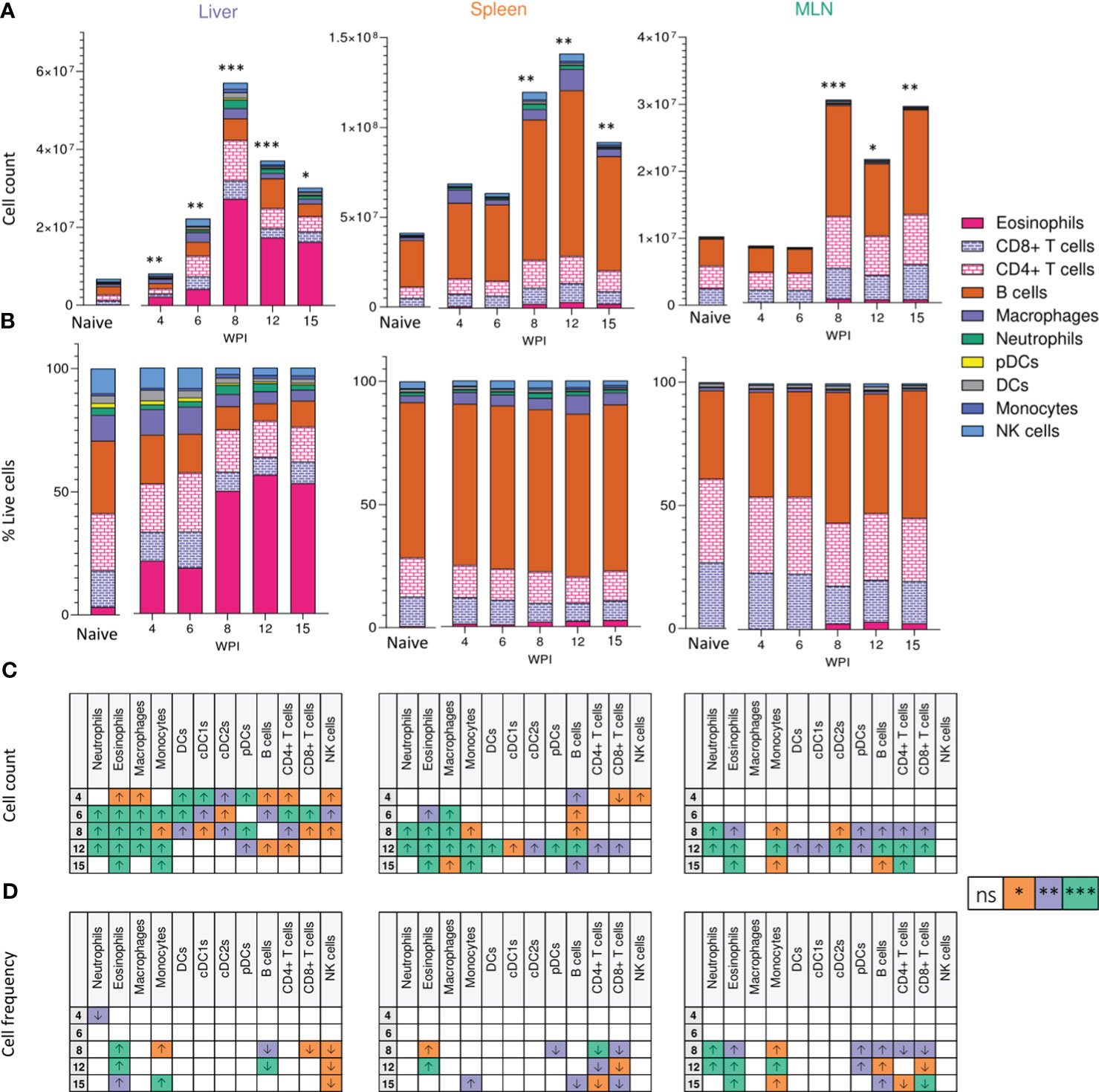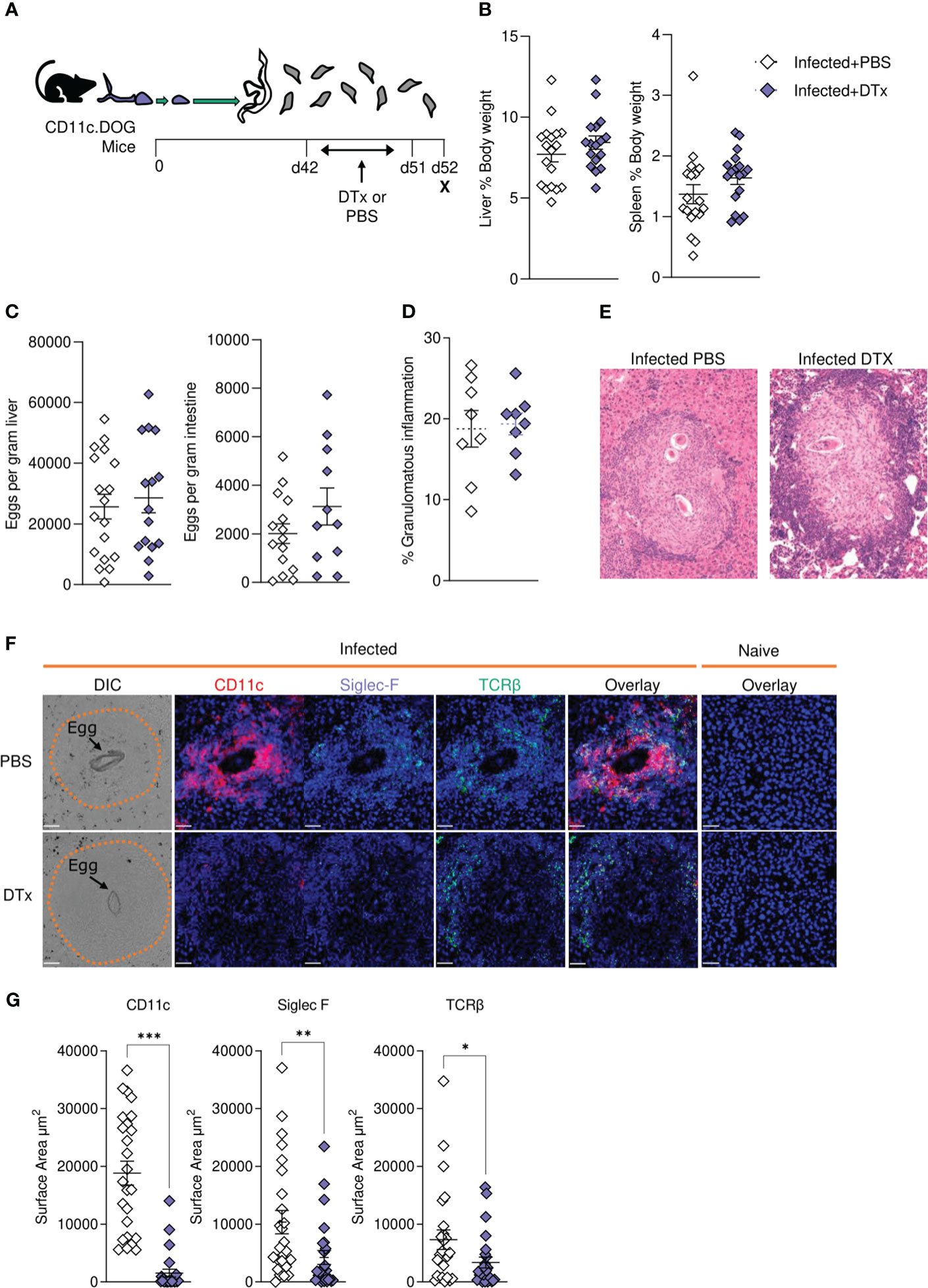
94% of researchers rate our articles as excellent or good
Learn more about the work of our research integrity team to safeguard the quality of each article we publish.
Find out more
CORRECTION article
Front. Immunol., 10 August 2023
Sec. Parasite Immunology
Volume 14 - 2023 | https://doi.org/10.3389/fimmu.2023.1229665
This article is part of the Research TopicHost-parasite interactions at the cellular, tissue, and organism levelView all 11 articles
This article is a correction to:
Dynamics of host immune response development during Schistosoma mansoni infection
 Alice H. Costain1,2†
Alice H. Costain1,2† Alexander T. Phythian-Adams1†
Alexander T. Phythian-Adams1† Stefano A. P. Colombo1†
Stefano A. P. Colombo1† Angela K. Marley1
Angela K. Marley1 Christian Owusu3
Christian Owusu3 Peter C. Cook1,4
Peter C. Cook1,4 Sheila L. Brown1
Sheila L. Brown1 Lauren M. Webb1,5
Lauren M. Webb1,5 Rachel J. Lundie6
Rachel J. Lundie6 Jessica G. Borger7
Jessica G. Borger7 Hermelijn H. Smits2
Hermelijn H. Smits2 Matthew Berriman3,8
Matthew Berriman3,8 Andrew S. MacDonald1*
Andrew S. MacDonald1*A corrigendum on
Dynamics of host immune response development during Schistosoma mansoni infection
by Costain AH, Phythian-Adams AT, Colombo SAP, Marley AK, Owusu C, Cook PC, Brown SL, Webb LM, Lundie RJ, Borger JG, Smits HH, Berriman M and MacDonald AS (2022). Front. Immunol. 13:906338. doi: 10.3389/fimmu.2022.906338
In the published article, there was an error in the author list, and author Jessica G. Borger and their affiliation were erroneously excluded. The corrected author list and affiliation appear above.
The new ‘Author contributions’ section appears below.
ASM and AP-A conceived the study. AP-A, AKM, JB, CO, PC, and SB performed the experiments. AC, SC, AP-A, CO, and ASM analyzed the data. AC and SC wrote the manuscript. AP-A, PC, MB, HS, and ASM read the manuscript and provided critical comments. All authors contributed to the manuscript and approved the submitted version.
In the published article, there was an error in Figure 2 and Figure 6 as published. In Figure 2, the splenic cell count (Figure 2C) and frequency tables (Figure 2D) were erroneously mixed up. In Figure 6F, the overlay image for the granuloma of CD11c depleted/Dtx injected mice was incorrect. The corrected Figure 2 and Figure 6 including the captions appear below.

Figure 2 Tissue-specific cellular responses during schistosomiasis. Stacked bar charts showing hepatic splenic and mesenteric (A) cell counts and (B) cell frequencies (as a proportion of total live cells) at indicated wks of infection when infected with 40 cercariae. For infected mice, data is presented as mean values for each given time point, with averages calculated from two pooled experiments per time point. n=6-8 per timepoint from two pooled experiments. Naïve data is presented as mean values for the entire infection, with averages calculated from two pooled time course experiments. n=30. Significance in (A) reflects comparison of total cell counts between naïve and infected mice. Statistics tables showing differences in (C) cell counts and (D) cell frequencies between naïve and infected mice, for the liver spleen and MLN. Arrows in table (C, D) represent the direction of cell frequency change in infected animals in comparison to naïve. Significance calculated by Kruskal-Wallis followed by Dunn’s multiple comparisons test, with comparison between naïve and infected groups. *p < 0.05, **p < 0.01, ***p < 0.001, ns = non-significant (P > 0.05).

Figure 6 CD11c depletion disrupts granulomatous pathology during S. mansoni infection. (A) Schematic of infection setup. CD11c.DOG mice were infected with 40 S. mansoni cercariae with CD11c+ cells depleted via Dtx administration on days 42-51, and mice culled at d52. (B) Liver and spleen weights for infected mice with data represented as a proportion of total body weight. (C) The total number of schistosome eggs per gram of liver or intestinal tissue. (D) Quantification of granulomatous inflammation. (E) Representative images of hepatic granulomas stained with H&E. (F) Representative confocal microscopy granuloma images, with staining for CD11c, Siglec-F and TCRβ. First column showing differential Interference Contrast (DIC) images, with eggs indicated by arrows and dotted lines outlining granuloma periphery. (G) Quantification of positive Siglec-F, CD11C and TCRβ staining. Data are from a single experiment (D-G) or pooled from 3 (A–C) 3 separate experiments. Significance calculated by unpaired T-test. Data presented as mean +/- SEM. *p < 0.05, **p < 0.01, ***p < 0.001.
In the published article, there was an error. One sentence relating to Figure 2 was incorrect, due to a mistake in the figure content; detailed above.
A correction has been made to Results, Cellular Responses to Schistosome Infection Vary Across Tissues, Paragraph 2. This sentence previously stated:
“Notably, the liver showed a significant decrease in B cell frequency from wk 8-15 of infection, while increased B cell proportions were observed in the spleen and MLNs.”
The corrected sentence appears below:
“Notably, the liver and spleen saw a decrease in B cell frequency at later stages of infection, while increased B cell proportions were observed in the MLNs”
The authors apologize for these errors and state that these do not change the scientific conclusions of the article in any way. The original article has been updated.
All claims expressed in this article are solely those of the authors and do not necessarily represent those of their affiliated organizations, or those of the publisher, the editors and the reviewers. Any product that may be evaluated in this article, or claim that may be made by its manufacturer, is not guaranteed or endorsed by the publisher.
Keywords: schistosomiasis, dendritic cells, pathology, chronic infection, transcriptomic (RNA-seq)
Citation: Costain AH, Phythian-Adams AT, Colombo SAP, Marley AK, Owusu C, Cook PC, Brown SL, Webb LM, Lundie RJ, Borger JG, Smits HH, Berriman M and MacDonald AS (2023) Corrigendum: Dynamics of host immune response development during Schistosoma mansoni infection. Front. Immunol. 14:1229665. doi: 10.3389/fimmu.2023.1229665
Received: 26 May 2023; Accepted: 29 June 2023;
Published: 10 August 2023.
Edited and Reviewed by:
Thiago Almeida Pereira, Stanford University, United StatesCopyright © 2023 Costain, Phythian-Adams, Colombo, Marley, Owusu, Cook, Brown, Webb, Lundie, Borger, Smits, Berriman and MacDonald. This is an open-access article distributed under the terms of the Creative Commons Attribution License (CC BY). The use, distribution or reproduction in other forums is permitted, provided the original author(s) and the copyright owner(s) are credited and that the original publication in this journal is cited, in accordance with accepted academic practice. No use, distribution or reproduction is permitted which does not comply with these terms.
*Correspondence: Andrew S. MacDonald, YW5kcmV3Lm1hY2RvbmFsZEBtYW5jaGVzdGVyLmFjLnVr
†These authors have contributed equally to this work
Disclaimer: All claims expressed in this article are solely those of the authors and do not necessarily represent those of their affiliated organizations, or those of the publisher, the editors and the reviewers. Any product that may be evaluated in this article or claim that may be made by its manufacturer is not guaranteed or endorsed by the publisher.
Research integrity at Frontiers

Learn more about the work of our research integrity team to safeguard the quality of each article we publish.